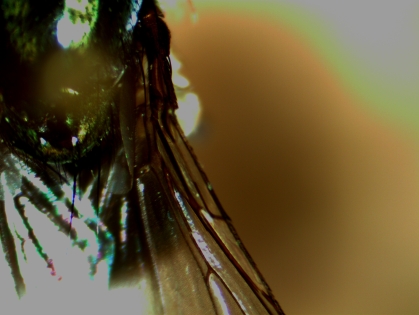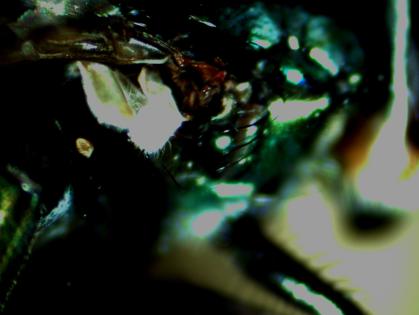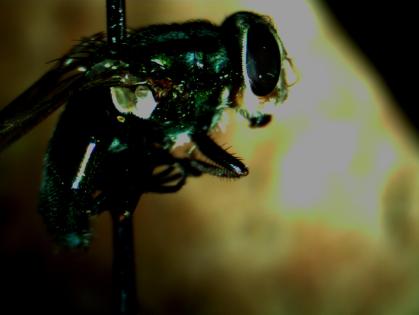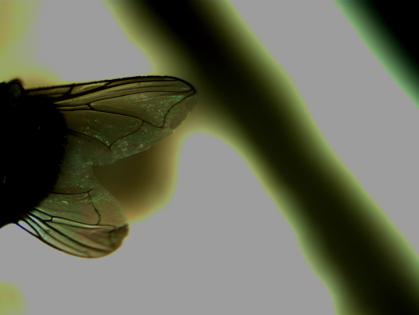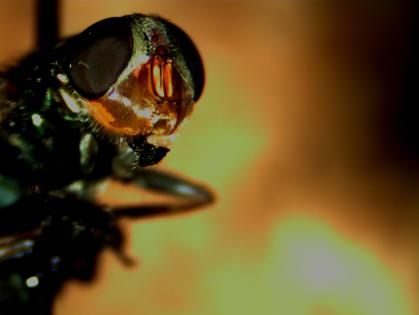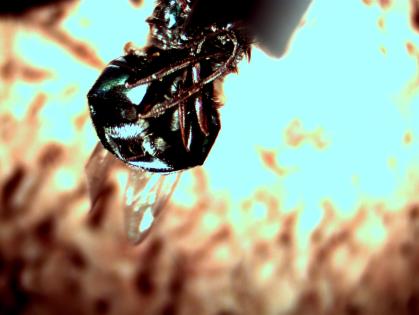
My friend Jory is having problems with a flea infestation in his new house. Here’s what he has to say:
So, I moved into a new place a week ago Sunday. The woman there before me got two kittens about 3 weeks before she moved out. And there are friggin’ fleas.
So far, I’ve tried the following:
* I bombed the place with foggers TWICE. Within 20 minutes, the fleas were jumping around in the kitchen again!
* I put flea powder on the carpets
* I had the carpets steam-cleaned
* I have put diatomaceus earth around the kitchen and other places I’ve seen the fleas.
* I’ve got a flea collar in the vacuum and have been vacuuming about 6 times each day. (Pretty much every time I need to walk into a room or leave it again.)
I’m not even sure where the hell the fleas are coming from anymore, but it seems to me they’re living in the kitchen, which doesn’t even make sense. The kitchen has a linoleum/vinyl floor. The edges curl up to the kitchen cabinets, so I’m theorizing that they’re living/laying eggs under the lino, which is protecting them from the foggers and allows them to jump out moments later and appear under the kitchen cabinets from seemingly nowhere.
What do you think? Ever heard of fleas living under lino?
Thanks for your help!
Jory
Ah, the never ending battle against blood sucking insects. Fleas have got to be some of the most annoying, because they seemingly appear out of nowhere and last for ages! Well, onto the questions.
First off, a little bit about fleas. Fleas are a wingless, blood sucking insect that feed on animals (and therefore humans). There are good number of different flea species, but the most common flea causing problems in a household is the cat flea, or Ctenocephalides felis. The good news with this flea is that it doesn’t transmit plague (unlike the rat flea which spreads bubonic plague). Since I don’t have a specimine to identifiy, I’m going to assume that Jory has C. felis. The bad news is it is still a blood sucker, and therefore still really annoying to anyone unlucky enough to get infested.
Most fleas spend their time on animals, blood feeding for several days or until they are groomed or knocked off. The cat flea doesn’t infest humans (i.e., doesn’t stay on humans for long periods) but can and will bite humans for a blood meal. Flea bites present as small, round, red marks, usually on the ankles or lower legs. People who are sensitive may see raised bumps and experience intense itching and rashes. Sever allergic reactions take approximately 12-24 hours to develop, and can last over 7 days. In the case of a bad reaction, a topical antihistamine cream, and an oral antihistamine may be used to treat the symptoms.
Fleas have a relatively simple life cycle, which makes interrupting said life cycle easy. The female flea must take a blood meal in order to produce eggs. She then lays her eggs within 2 days of her first blood meal. The eggs are found in pet bedding, carpet, upholstery–that sort of place. The eggs are tiny (1/50th of an inch), white, and generally round. They are rather delicate, and can be dried out by many products. A single female flea can lay up to 27 eggs per day for around 9 days.
The female flea also excretes what she doesn’t use of the blood meal as feces, often termed “flea dirt” which serves as food for her young. The feces looks just like dirt, and can most easily be seen in the fur of infested animals. FYI–if you were to place this dirt in water, it would rehydrate and turn the water bright red. Science is fun AND interesting!
The eggs hatch between 2 days and 2 weeks after being laid (depending on temperature–optimum temperature for this species seems to be between 80 and 90 F, with a relative humidity of 70%. They will hatch at lower and higher temperatures, just not as quickly or readily. They don’t seem to hatch below 50 F) into a small, worm-like larvae. These larvae are the most vulnerable stage. The larvae live in the carpet, bedding, or upholstery, feeding on flea feces in those same areas. The larvae go through several stages, or instars, in this form, and stay as larvae for as few as 6 days, to well beyond 2 weeks, once again depending on temperature.
Once the larvae have finished their instars, they begin to collect debris in their immediate area–things like hair, dust, dirt, fibers, etc. They use these debris and a silky material produced by their saliva to construct a hard casing around their entire body. This casing is almost impossible to see, because it is to completely camouflaged with its surroundings. The flea undergoes a complete metamorphosis inside the casing, where it breaks down its body into its basic components and reforms it into the adult flea form. This stage is very hardy–it can take a lot of stress and abuse without dying. In fact, most insects use the pupal form to survive adverse conditions, such as winter or drought. Fleas are no exception, and it is very, very hard to kill the pupal stage.
Pupae take between 7 and 10 days to emerge into adults. However, if conditions are adverse, they newly formed flea may stay in the pupal casing until it is all but guaranteed a blood meal after emergence. This is why an empty home can suddenly have a flea infestation right after you move in. Fleas can stay dormant in the pupal stage for months at a time, waiting to sense a blood meal. Vibrations caused by walking and moving appear to trigger the dormant insects into emerging all at the same time. Fun for all involved!
Newly emerged adults must have a blood meal to survive. They will attach to any animal that happens to be in the area, feed, mate, and repeat the cycle.
So, in an indoor habitat, let’s assume that the average temperature is 75 F most of the time. This would put the life cycle at 1 week for the egg stage, 10 days for the larvae, and 10 days for the pupae (approximately). That’s about 27 days for a flea to go from egg to adult. Assuming Jory moved into his home and didn’t notice any adult fleas when he went to look at the place, then all the fleas he’s dealing with now were in the earlier stages of development–egg, larvae, or pupae. So what should he do?
Provided you don’t have a pet that is re-infesting the house, fleas are rather easy to control. The simplest thing to do is vacuum. A recent study showed that vacuuming up any stage other than pupae kills the flea (so eggs, larvae, and adults are all killed by the vacuum) so the first step to control is to vacuum any and all areas that are infested. Make sure you include upholstery, beneath furniture, and along edges. Jory mentioned that he thought there may be some fleas beneath the linoleum. Remember that all an immature flea needs to survive is flea dirt, so it’s very possible for fleas to live in all kinds of habitats. Vacuum wherever fleas are suspected.
Flea bombs are a way to quickly kill adult fleas, but they present their problems. They must be used in a tightly closed area, and are designed for specific square footage. If you attempt to use a bomb incorrectly, it will not kill the adults at all. Secondly, there are really only a few pesticides licensed for indoor use. Fleas have this annoying ability to evolve, and the more they are exposed to a pesticide, the more likely they will become immune from it. Jory has tried the flea bombs, and says they fleas come jumping out right afterwards. This tells me they have been exposed before, and are now immune to whatever is in the bomb. I suggest finding another type of bomb with a different pesticide in it, or simply physically remove the fleas with a vacuum.
Diatomaceous earth is a great way to kill eggs and larvae. The fossilized diatoms act as razor blades, cutting the integument of the fleas to ribbons, and causing the fleas to dehydrate or bleed to death. This doesn’t work as well on adults, but works a bit. Spread the DE around any areas where fleas are found, wait a bit, then vacuum it up.
The biggest thing to do is wait. Remember the life cycle–you can easily kill the eggs and larvae, but the pupae are a pain. You may have to wait them out for up to 2 weeks. Vacuum at least twice a day, wash bedding, and clean upholstery, and within a month you should have interrupted the life cycle. Good luck!
The capricorn beetle, thought to be extinct in England since the late 18th century has been found hanging out on the side walk. Experts believe this wood-feeding insect may have hitched a ride on some imported wood pallets from a distant country, but are still intrigued by its arrival and subsequent discovery. The specimen was turned over to athorities and sent to the local butterfly reserve.
–Adrienne
The World Health Orginazation has just released a comprehensive report, written by various pest athorities, about the status of urban pests. This report is meant to be a basis for public policy. The orgination asked leading experts on various pests to put together as much information about each pest as possible. The pests covered in the report include cockroaches, dust mites, bedbugs, fleas, pharaoh ants, fire ants, flies, body lice, ticks, and mosquitos. There’s also information about vertebrate pests, as well as a section on allergic asthmas.
The best part, though, is it is published on the web for free:
http://www.euro.who.int/document/e91435.pdf
Although if you’d rather have the bound, hard copy version, you can purchase it from WHO for $120 plus $12 shipping.
http://www.euro.who.int/InformationSources/Publications/Catalogue/20080617_9
Woo!
–Adie
Cloth and Fodder has a great, indepth post about the process of making a wasp cake
 (it looks like Arachnospila sp. to me). The post takes you through the full process of making the cake, along the will the intricate steps and various photos. What a beautiful result!
(it looks like Arachnospila sp. to me). The post takes you through the full process of making the cake, along the will the intricate steps and various photos. What a beautiful result!
–Adrienne
Killerstartups.com just announced the creation of a new research resource: ISpecies.org. The service is simply a specialized search engine that allows for the targeted searching of a specific species. The engine mines everything from Wikipedia to Google Scholar and gives you a list of articles, the Wiki entry, up to 5 pictures, and a variety of other resources all about that organism. Excellent!
–Adrienne
 A fabulous blog, Dark Roasted Blend, has a series of close-up arthropod faces (they call them “bug” faces, but then the first picture is a hook worm….Civilians.) on their site today. It’s a great read, with some amazing photos. If only these came in 8×10! I know what I want for Christmas this year…
A fabulous blog, Dark Roasted Blend, has a series of close-up arthropod faces (they call them “bug” faces, but then the first picture is a hook worm….Civilians.) on their site today. It’s a great read, with some amazing photos. If only these came in 8×10! I know what I want for Christmas this year…
–Adrienne
Source (Oklahoma Microscopic Society via Dark Roasted Blend)
Filed under: 1
So Trendhunter has a new post up about insect-shaped cooking ware. Not a very interesting post, however, as it only talks about ant-shaped salt and pepper shakers. Cute, but not that interesting. I know for a fact there’s more stuff out in the big bad world (as I seem to get some of it every year). Perhaps I’ll work on looking that up…
–Adie
(Image courtesy of SolidPerfume.com)
Apartment Therapy (ever heard of them? A great read!) has an interesting article up today about becoming a backyard beekeeper. As food prices rise and people get more interested in sustainable food sources and living-off-the-land, beekeeping is going to become more and more popular in suburbs and cities.
Beekeeping is actually really fun–and you get to eat the local honey you produce. It does take some intense work, however, especially during peak seasons, but I personally think it is well worth the challenge. Warning: if you are allergic to bees, you should not attempt beekeeping under any circumstances! Seriously! You’d be surprised at how many people I know who have gotten into a bad situation doing just that.
For more information, visit the following sites:
American Association of Professional Apiculturists
Iowa State University Beekeeping Links
Once I get some land, my beekeeping will shoot up. I can’t wait!
–Adrienne
According to reports, scientists have created a network of insect spies–insects with cameras and computer chips embedded in their bodies that send information back to computers. Several articles have commented on the stupidity of these experiments (along with expounding on a variety of conspiracies associated with insect spies), but I think it’s neato. Besides, didn’t we already see this in a movie or two? Everyone knows that once it’s on the big screen it’s real.






